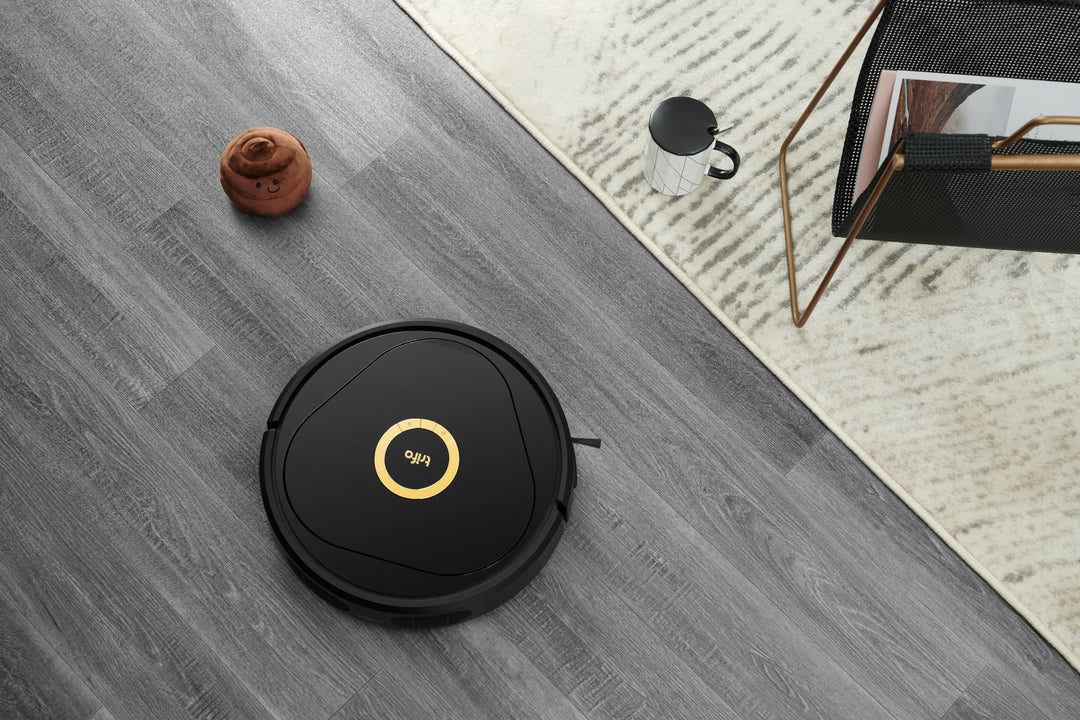
The first ever robot vacuum was introduced in 1996 by Electrolux, a Swedish household appliance brand. Robot vacuum technology has come a long way since then. But a lot of you may be wondering, how exactly do robotic vacuums work? How do they know where to go and how do they see?
Cliff Sensors, Wall Sensors, and Bump Sensors
Most robot vacuums like the Trifo robot vacuums have different types of sensors that allow them to navigate their surroundings. Those sensors include cliff sensors, wall sensors, and bump sensors. Cliff sensors measure the distance between the base of the robot to the floor, allowing it to avoid falling off cliffs and stairs. Wall sensors, as you may have guessed, help robot vacuums determine their proximity to the wall, and bump sensors allow the robots to avoid furniture and large objects if an impact triggers the sensors.
Time-of-Flight (ToF) Sensors
Aside from the standard sensors, more advanced robot vacuums such as the Trifo Ollie and Lucy Ultra robot vacuums, have time-of-flight (ToF) sensors that work in any lighting conditions and can provide more accurate range measurements. ToF sensors are used to detect small objects. For example, the Trifo Lucy Ultra robot vacuum can detect objects as small as 1 inch such as cords and even pet waste, making it perfect for pet owners! The Trifo Lucy Ultra and Ollie Ultra also have a dual 1080P HDR camera. Paired with the advanced ToF sensors, these robot vacuums are capable of providing a live video feed and motion detection alerts even in the dark.
Simultaneous Localization and Mapping (SLAM)
Some robot vacuums such as the Lucy and Ollie Ultra robot vacuums use visual SLAM technology for navigation. Simultaneous localization and mapping is the process of constructing a map of an unknown environment while simultaneously keeping track of the device’s location even during motion using sensors and algorithms. The 3D SLAM technology and RGBD (depth) cameras are what provides these robot vacuums with smart navigation so they do not get lost within their environment.
LiDAR vs RGBD
LiDAR technology is another popular option for mapping solutions. LiDAR sensors use light to determine the location of unfamiliar objects by shooting a laser at a target and measuring how long it takes for that signal to return. A drawback of using LiDAR is not only the higher cost, but the fact that it uses 2D visualization instead of 3D. Using SLAM technology with RGBD cameras like what Trifo vacuums have, is sometimes the better option with better value, while having a 3D range of vision. Due to the lower cost without sacrificing on the quality of AI, Trifo robot vacuums are made to be more accessible for many in terms of price point.
Trifo Intelligent Robotics Visual System
Trifo robotic vacuums have the Trifo Intelligent Robotics Visual System (TIRVS 3.0) technology which provides smart vision for object recognition and self-mapping functions. With TIRVS 3.0, Trifo robot vacuums get smarter with each clean and decides the best cleaning path. Trifo’s most intelligent vision recognizes over 70 different household items and can see objects as small as 1 inch such as cords and even pet accidents.
The Trifo Mission
Our mission at Trifo is to make smart home appliances more accessible for all. We strive to create affordable autonomous robots to solve everyday problems in the home while providing comfort, convenience and ease. Our goal is to offer the latest technologies at the fairest prices without sacrificing quality. Take a look here at what we have to offer!